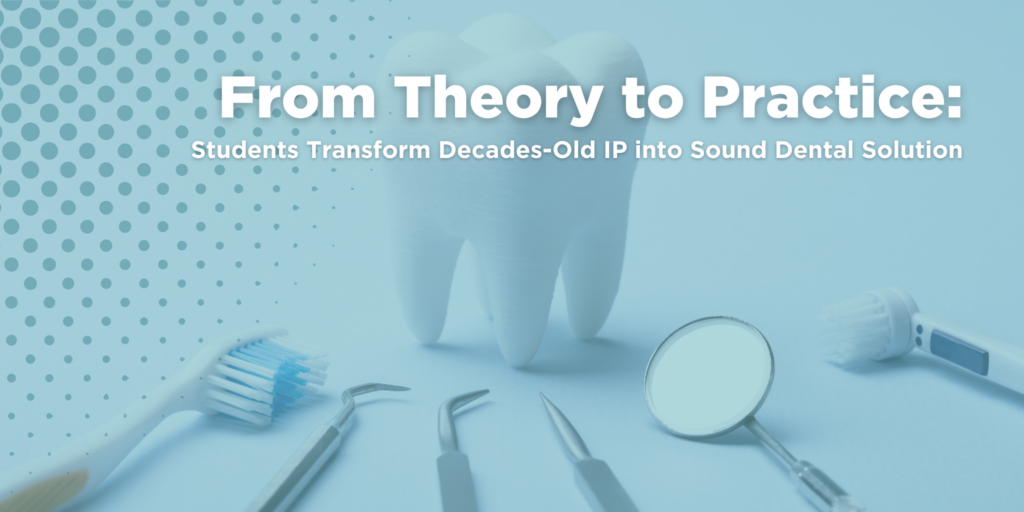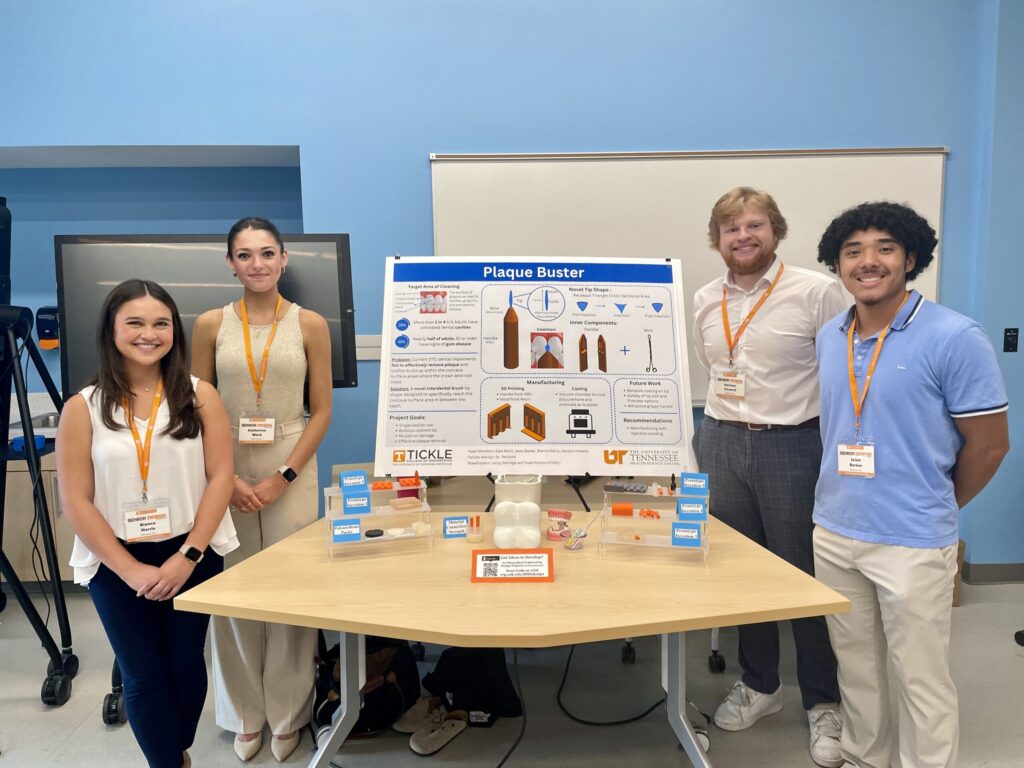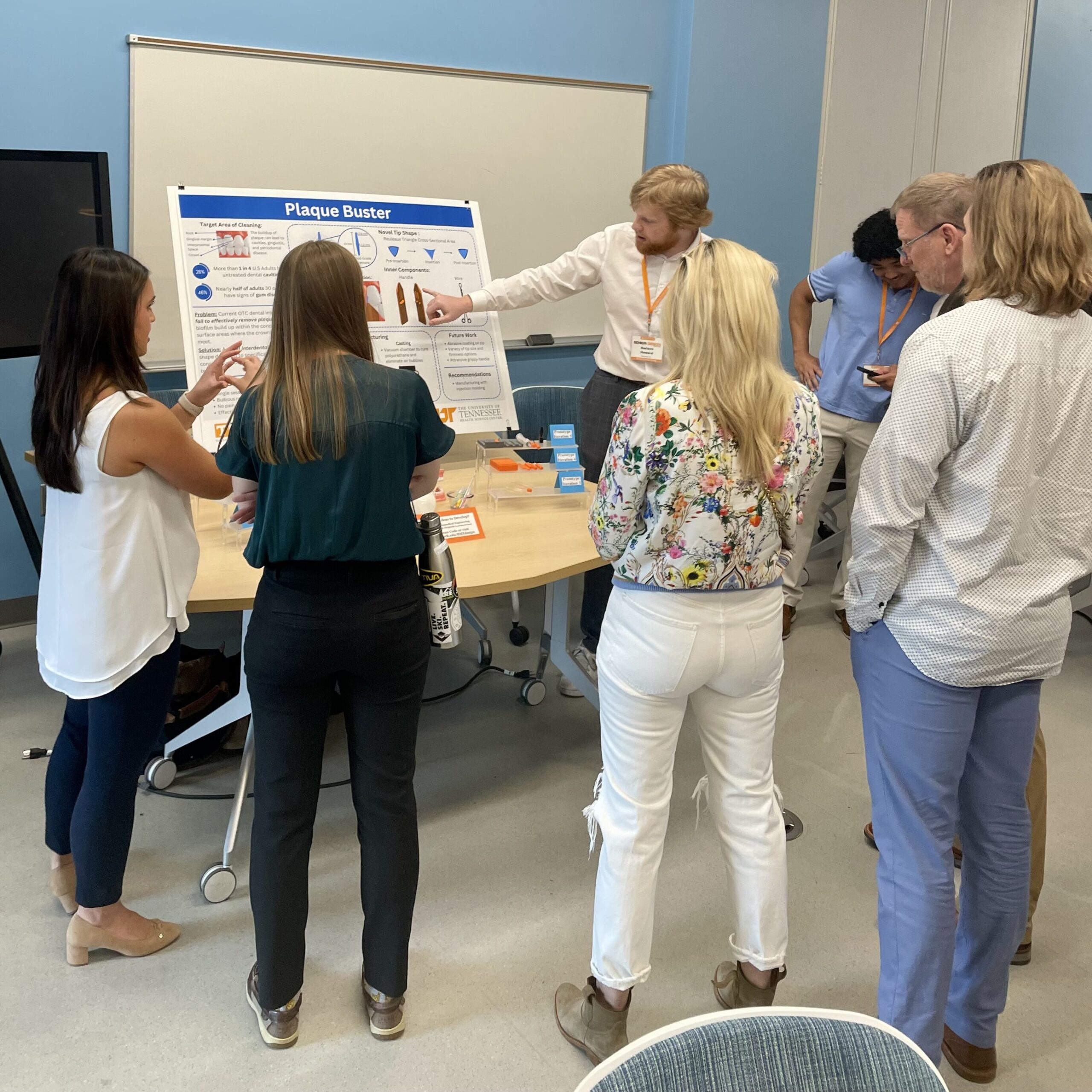
The University of Tennessee Research Foundation celebrates and supports entrepreneurship across the UT System. One way UTRF does this is by working with students in the two-semester Senior Design course with UT Knoxville’s Tickle College of Engineering together with innovators at UT Health Science Center. UTRF has been sponsoring such projects over the past five years.

The Senior Design project allows students to leverage their skills to address real-world challenges by advancing selected early-stage technologies to a prototyped reality. It also encourages an entrepreneurial culture and promotes commercialization through practical case-specific learnings associated with turning an idea into a tangible product.
I had a mentor that once told me, ‘Anyone can be Einstein at the desk, but few can be Einstein at the bench.’ He meant that ideas are a dime a dozen, but it’s much harder to turn theory into practice,” said UTRF Vice President Todd Ponzio. “This program helps us collectively do just that.”
This year, Ponzio and Roy Selvidge, assistant professor in the College of Dentistry and Department of General Dentistry at the UT Health Science Center, served as stakeholders for one Senior Design project, Panacea Inc., to develop intellectual property Selvidge patented in 1985.

Four biomedical engineering seniors from the Tickle College of Engineering’s Department of Mechanical, Aerospace, and Biomedical Engineering—Garison Howard, Jalen Barker, Bianca Harris, and Kate Ward—made up Panacea Inc. They showcased their findings at the annual Senior Design Showcase at the beginning of May.
At the beginning of the course, the students were assigned roles and responsibilities, ranging from communications director to project manager.
I was a project manager, so I was overseeing the deliverables and making sure they met the requirements that they needed to meet. I was also in charge of designing the prototypes,” said Barker. “My favorite part was the rapid prototyping, such as how fast we could go from design to prototype and then see how it worked.”

Much like in a real-world environment, they were presented with a problem: Current dental implements fail to effectively remove plaque and biofilm buildup within the concave areas where the crown and root meet. They spent the next two semesters developing their solution: “Plaque Buster,” a novel interdental brush tip shape designed to reach the concave area between the teeth.
Having an entire year to work on one project was cool,” said Howard. “It’s going to mirror what we’ll be doing after graduation. It’s a much more in-depth designing process than we were previously exposed to.”
Jeff Reinbolt, Associate Department Head, Director of Graduate Programs and Associate Professor, served as the student’s faculty advisor for the project.
The opportunity that the students had to work with UTRF and Dr. Selvidge was very unique, and the experience will benefit them in their future careers,” said Reinbolt. “After graduation, some students will get their doctorate; others will go to medical school or work in industry. This course prepares all three groups of students after graduation.”
Looking ahead, Barker and Harris already have plans after graduation. Barker will begin a master’s degree in medical technology design this fall. Harris is moving out of state to work as a technical solutions engineer for a healthcare software company.
When I was interviewing for post-grad jobs, interviewers would ask me about projects I was working on in school,” said Harris. “This project was a huge thing I could touch on and discuss what I was doing for the team.”